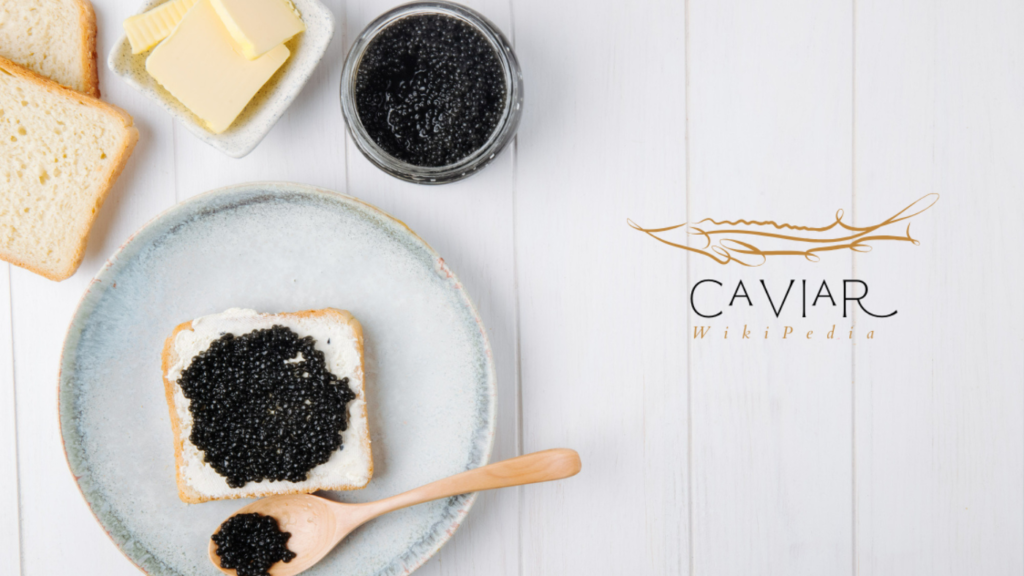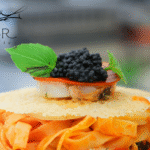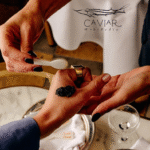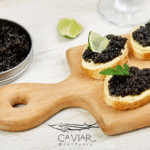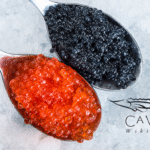Caviar is the salted eggs, or roe, of sturgeon fish, known for its unique flavor and texture. It’s often seen as a luxury food, served at fancy events or fine dining restaurants. The production process starts with selecting the right sturgeon, which can be from wild catches or fish farms.
There are two main ways to produce caviar: the classic method and the no-kill method. In the classic method, the fish is killed to remove the roe, while the no-kill method sedates the fish and extracts the eggs without killing it, aiming for sustainability.
Both methods then involve cleaning the eggs, salting them to preserve and flavor, and grading them based on size and quality.
An unexpected detail is that the no-kill method, while eco-friendly, can sometimes result in firmer eggs that some find less palatable, showing a trade-off between quality and sustainability.
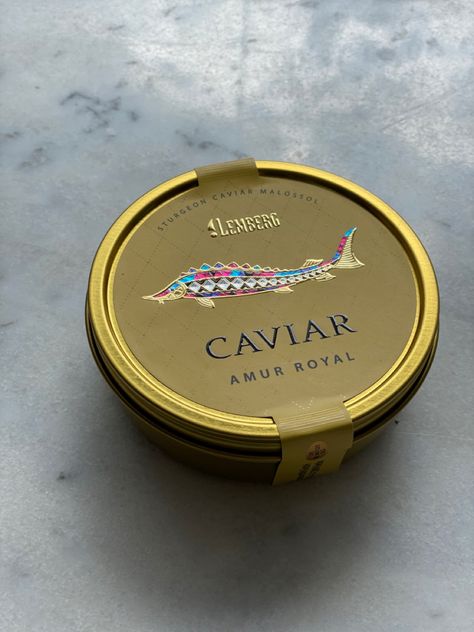
Types and Grading
Different sturgeon species produce distinct caviar. For example, the Beluga sturgeon produces large, expensive eggs, while Osetra offers medium-sized, brown eggs. Grading happens after processing, often using categories like 0, 00, 000, where 000 likely means the largest eggs, typically from the Beluga.
Salting is key, with about 5% salt by weight added to enhance flavor and preserve the eggs, usually mixed for 5 to 15 minutes with a salt concentration of 3 to 10%.
Sustainability and Modern Practices
Due to overfishing, wild sturgeon stocks have declined, making aquaculture essential. Fish farms raise sturgeon in controlled environments, allowing multiple harvests from the same fish, which helps preserve wild populations. This shift is crucial for the future of caviar production.
Survey Note: Detailed Exploration of Caviar Production
Caviar, a gourmet delicacy, is the salted, non-fertilized eggs of sturgeon fish, often associated with luxury and fine dining. Its production is a complex process involving traditional and modern methods, with significant implications for sustainability and quality.
This note delves into the historical context, production techniques, types of caviar, grading systems, and the role of aquaculture, providing a comprehensive overview for enthusiasts and professionals alike.
Historical Context and Origins
Caviar has a rich history, dating back to ancient times when it was consumed by Persian royalty. By the 10th century, it reached the tables of aristocratic Greeks through trade with Kievan Rus’, and its production centered around the Caspian Sea, with Russia and Iran as major producers.
In the 19th century, the U.S. became a significant producer, particularly from the Delaware and Columbia Rivers, but overfishing led to a decline, pushing the industry towards aquaculture.
Production Methods: Classic vs. No-Kill
There are two primary methods for harvesting caviar, each with distinct processes and impacts:
Classic Caviar Harvesting: This traditional method, often used in Iran and Russia, involves killing the fish. The process includes:
- Cooling the fish in ice-cold water to reduce movement and fat, rendering it unconscious.
- Killing the fish quickly, then cleaning it with purified water.
- Making an incision to remove the roe sacks, which are immediately cleaned.
- Screening the eggs on a stainless steel mesh to separate them from the membrane.
- Washing, filtering, draining, weighing, salt-curing, and grading the eggs.
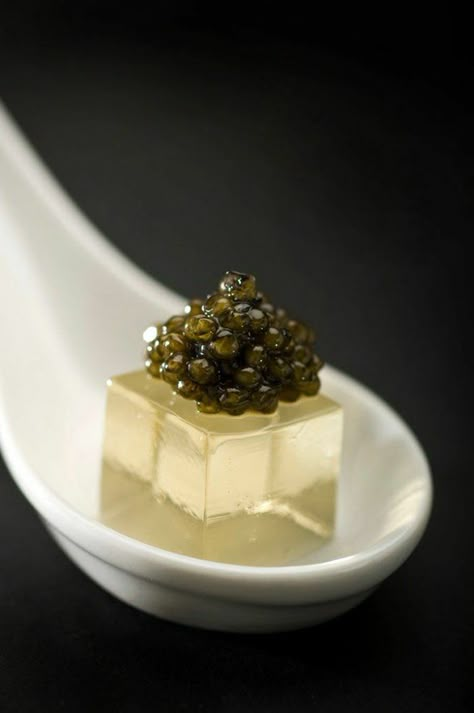
No-Kill Caviar Harvesting: Aimed at sustainability, this humane method avoids killing the fish. The process includes:
- Injecting hormones or signaling proteins days before harvest to separate eggs from the sac.
- Cooling or sedating the fish with carbon dioxide, sedatives, or low electrical current to prevent stress.
- Removing eggs through methods like C-section (small incision, scoop eggs, sew and bandage) or vivace method (massaging eggs out, rinsing in water-calcium solution for firmness).
- Testing firmness, washing, filtering, draining, weighing, salt-curing, and grading.
| Harvesting Method | Description | Process Steps | Impact on Fish | Quality Issues |
|---|---|---|---|---|
| Classic Caviar Harvesting | Traditional method, kills the fish, used for fine caviar, passed down for centuries, uses farmed sturgeon. | 1. Cool fish in ice-cold water, kill, clean, incision to remove roe, screen eggs, wash, filter, drain, weigh, salt-cure, grade. | Fish is killed. | Maintains traditional texture and flavor, meets connoisseur standards. |
| No-Kill Caviar Harvesting | Humane method, uses hormone therapy, milking, or C-section, less common, aims for sustainability. | 1. Inject hormone, cool/sedate fish, remove eggs by C-Section or vivace, test firmness, wash, filter, drain, weigh, salt-cure, grade. | Fish remains alive, potential for multiple harvests, but risks infections, infertility. | Eggs can be firm, unpalatable texture, hormone use may affect safety. |
While sustainable, the no-kill method can result in firmer, potentially unpalatable eggs, and risks like infections or infertility. It’s less common due to higher upfront costs (hormones, chemicals, equipment) but could save costs over time with multiple harvests.
Most producers still use the classic method due to quality and cost issues, despite the no-kill method’s potential for sustainability, especially for endangered sturgeon, which can live up to a century and take a decade to develop eggs.
Types of Sturgeon and Their Caviar
Caviar varies by sturgeon species, each offering unique characteristics:
- Beluga Sturgeon: Produces the largest, most expensive caviar, with eggs ranging from pale silver-grey to black, prized for their soft, pea-sized orbs.
- Osetra Sturgeon: Medium-sized, light brown to rich brown eggs, cherished for a distinct nutty flavor.
- Sevruga Sturgeon: Small, dark eggs with a briny taste, recognized for their intensity.
- Sterlet Sturgeon: Rare, small golden eggs, once reserved for Russian, Iranian, and Austrian royalty.
- Siberian Sturgeon: Known for its caviar, though specific characteristics are less detailed in sources.
- Kaluga Hybrid: A hybrid, with caviar details less commonly specified.
- American White Sturgeon: Abundant in California and the U.S. Pacific Northwest, offering various qualities.
These species, particularly Beluga, Osetra, and Sevruga, supply most of the world’s caviar, with the Caspian Sea region historically at the forefront, though now supplemented by global aquaculture.
Grading and Salting Processes
After harvesting, caviar is graded and salted to enhance quality and preservation:
- Grading: Caviar is classified into categories 0, 00, 000 based on appearance, firmness, and size, with 000 likely indicating the largest eggs, often from Beluga. This grading ensures consistency for high-income consumers, with market values like Osetra reaching $72.1 million in 2018.
- Salting: The salting process involves adding salt to the eggs, typically for 5 to 15 minutes, with a concentration between 3 and 10%, resulting in a final salt content of about 5% by weight. This preserves the eggs and enhances flavor, transforming them into the coveted delicacy.
Sustainability and the Role of Aquaculture
The caviar industry faces significant sustainability challenges due to overfishing and habitat destruction, such as hydroelectric dams affecting sturgeon rivers.
Wild caviar production was suspended in Russia between 2008 and 2011 to replenish stocks, and the U.S. banned Caspian and Black Sea beluga caviar imports in 2005 to protect endangered species.
Aquaculture has become a vital solution, with 90% of the world’s caviar production now from the Caspian Sea basin through fish farms. Sturgeon are raised from a young age, fed, and given optimal conditions to ensure growth.
Tests like ultrasound and biopsies determine egg quality, and stress-free conditions prevent egg reabsorption. This method allows for multiple harvests, using all sturgeon parts, promoting sustainability and preserving the environment.
Conclusion
Caviar production is a blend of art and science, balancing tradition with innovation. The classic method offers high-quality caviar but at the cost of fish life, while the no-kill method supports sustainability, albeit with quality trade-offs.
As aquaculture grows, it ensures the future of this luxury, preserving sturgeon populations and meeting global demand. Whether for connoisseurs or newcomers, understanding caviar’s production reveals its rich heritage and evolving practices.

